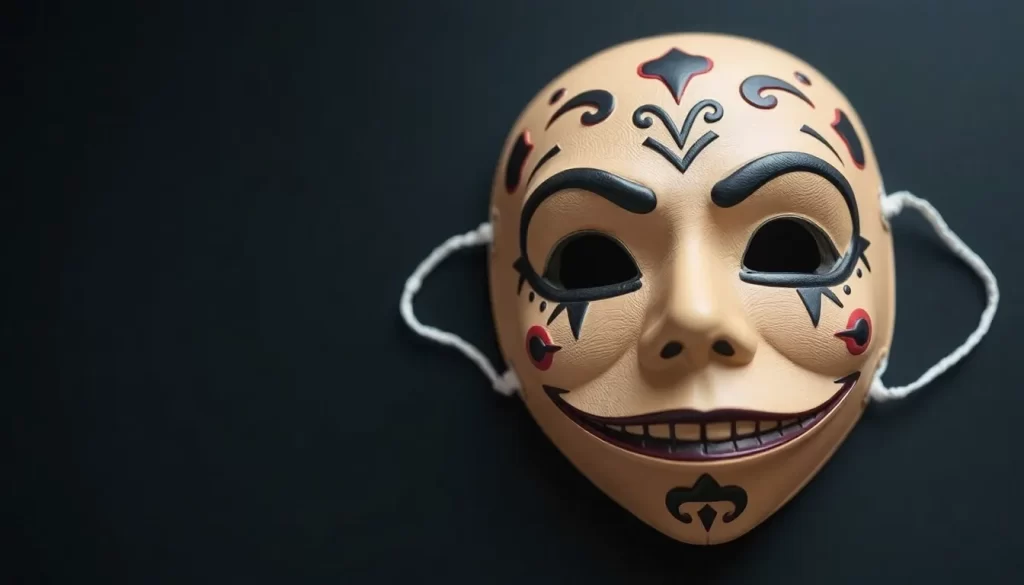Types of Masks and Their Uses

The world of masks is vast and multifaceted, transcending cultural boundaries and serving numerous purposes throughout history. From ancient rituals to modern-day entertainment and protection, masks are an essential aspect of human expression. In this article, we will explore the various types of masks, their historical significance, and their roles across different contexts.
Types of masks: exploring their diverse purposes
Masks can be categorized based on their functions, including ritualistic, protective, entertaining, and disguising purposes. Each type has a unique history and cultural significance, revealing the rich tapestry of human creativity and societal needs.
Ritual masks: a window into ancient beliefs
Ritual masks are among the oldest known types of masks, utilized in various cultures for spiritual and ceremonial purposes. They often symbolize deities, ancestors, or spiritual beings, and their designs vary widely across different regions. Some notable examples include:
- African masks: Typically carved from wood and adorned with colorful decorations, these masks represent ancestors or animals. They play a vital role in tribal dance rituals, connecting performers with their spiritual heritage.
- Oceania masks: In some Pacific cultures, masks are used by secret societies to protect against evil spirits. Notable are the towering six-meter masks used in specific rituals.
- North American masks: Indigenous groups, like the Inuit and woodland tribes, utilize "False Faces" in healing rituals performed by shamans.
- Egyptian masks: Ancient Egyptians created death masks to help the deceased’s soul recognize its body, thus facilitating its journey in the afterlife. Masks representing gods were also worn by priests during rituals.
- Chinese masks: Employed in various ceremonies, these masks were believed to express gratitude to gods and ward off evil spirits, featuring prominently in wedding and funeral rituals.
Entertainment masks: a theatrical evolution
Entertainment masks have played a crucial role in performing arts, from ancient theatre to modern-day carnivals. They enhance storytelling and emotional expression on stage. Some key examples include:
- Greek theatre masks: Crafted from organic materials like wood and leather, these masks often included a brass megaphone to amplify the actors' voices, allowing audiences to engage with performances.
- Chinese opera masks: Characterized by vibrant colors and intricate designs, these masks signify specific traits and personalities of the characters, providing a visual language to the performance.
- Indonesian Topeng masks: Used by dancers to narrate tales through their movements, these masks are integral to cultural storytelling traditions.
- Korean masks: Traditionally used in plays, these masks provide sharp social commentary, reflecting societal issues and emotions.
- Venetian carnival masks: Originating in a time when masks were essential for social freedom, today they symbolize creativity and artistic expression during the annual Carnival of Venice.
Interestingly, the line between ritual and entertainment masks can often blur, as some theatrical performances may incorporate ritualistic elements, and vice versa.
Disguise masks: concealing identity
Masks for disguise serve to obscure identity, allowing wearers to navigate social structures without revealing their true selves. Historical examples include:
- Venetian masks: During the Republic of Venice, strict social hierarchies prompted people to wear masks, enabling them to mingle across class lines without prejudice.
- Modern disguise masks: Today, masks are utilized not only for parties and carnivals but also for practical purposes, such as military camouflage, by criminals to conceal identity during illicit activities, and by protesters seeking anonymity.
Protective masks: safeguarding health and safety
Protective masks are essential tools designed to shield the wearer from physical dangers. They have evolved significantly, with applications in various fields:
- Historical protective masks: Knight helmets served as early forms of protective gear during battles.
- Police riot gear: Officers wear helmets and masks to protect themselves during civil unrest.
- Gas masks: Developed during wartime, these masks protect against toxic inhalants, remaining crucial in various industrial and emergency settings.
- Medical masks: Surgical and oxygen masks are vital in healthcare, preventing the spread of infections and ensuring patients receive adequate oxygen.
- Sports masks: Athletes in sports like hockey, fencing, and paintball use protective masks to safeguard against injuries during gameplay.
Historical significance of masks: a cultural journey
The cultural significance of masks has evolved over time, reflecting societal changes and technological advancements. Masks have served as conduits for expression and communication, enabling societies to convey complex ideas and beliefs. They also provide insight into historical practices, revealing how different cultures approach themes of mortality, identity, and spirituality.
From ritualistic uses that connect people with their ancestors to the modern-day applications in healthcare and entertainment, masks continue to be an integral part of human life. Their ability to transform identity and convey messages transcends time and culture, highlighting the shared human experience of seeking to understand our world.
Modern adaptations and the future of masks
As society continues to evolve, so too does the role of masks. The recent global pandemic has propelled the use of masks into the forefront of public consciousness, highlighting their importance in protecting health. Masks have also become symbols of social movements, representing unity and resistance. With advancements in technology, we may see innovations in mask design that enhance both functionality and aesthetics, from smart masks equipped with sensors to sustainable options made from eco-friendly materials.
In this ever-changing landscape, masks will likely continue to adapt, serving both their traditional roles and emerging functions in our modern lives.
 10+ Interesting Facts About Masks You Didn’t Know
10+ Interesting Facts About Masks You Didn’t Know